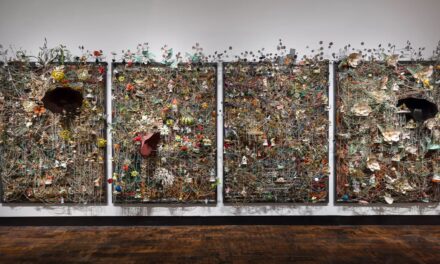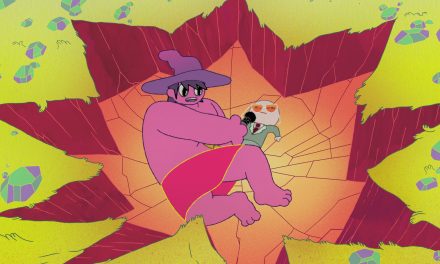There is no animation studio as acclaimed as Pixar, and few people know Pixar better than Virginia “Gini” Cruz Santos. Santos, a Filipina animator, has worked at Pixar Studios for nearly 20 years. She is most renowned for her animation of Dory in “Finding Nemo.” Santos also worked on animation for “Toy Story 2,” “The Incredibles” and “Up.”
Santos visited a group of about 30 Emory students in White Hall on Oct. 24 to talk about Pixar’s latest flick, “Coco.” The film follows the story of Miguel (voiced by Anthony Gonzalez), a Mexican boy who adores music but whose family forbids him from performing. When he defies his family on Dia de los Muertos (Day of the Dead), Miguel and his hairless Xoloitzcuintli dog Dante find themselves on an adventure in the colorful Land of the Dead, where Miguel comes face to face with his ancestors, meets new friends and follows his musical passion.
Santos spoke about the process of making the film and showed early animation “rigs,” or 3D skeletal models of the characters, as well as several minutes of exclusive footage from the film. Santos explained her job as supervising animator, for which she oversees 80 animators who each contribute different scenes to the film.
Prior to her presentation, The Emory Wheel sat down with Santos to talk about “Coco,” animation and her career at Pixar. “Coco” will be released in theaters Nov. 22.
This transcript has been edited for clarity and length.
Jesse Weiner, The Emory Wheel: What made “Coco” different from previous films you have animated?
Gini Santos: Well, one thing is the skeletons. We have never animated a skeleton character. Because they have a human structure, we had a foundation on how we wanted them to move. [However], without all the skin, muscle and tissue, we had to come up with how we want [the skeletons] to move, and how can they be entertaining.
Also, this film is just large in scale, and you’ll see that the sets are huge. There’s the Land of the Living and the Land of the Dead, and all the characters in those [worlds]. And because the [story] is about an extended family of aunts, cousins and uncles, we had to animate a lot of characters. And then we have a hairless dog, which we’ve never animated before. We’ve had dogs before in our films, but not without fur.
TEW: Is it harder to animate a fish or a skeleton?
GS: Skeletons are much harder. With fish, you’re just animating a face. When I animated on “Finding Nemo,” I think my facial animation improved because I was just concentrating on a face. Of course you have to animate the body and the fins, but in our skeleton model rig we have 127 bones. We wanted some of those bones to move separately, so there’s a lot to move and animate. Skeletons are definitely a lot harder.
TEW: To what extent does the actor voicing a character influence its animation?
GS: A lot. We realize that actors doing dialogue on animated features have nuances in how they say their lines. Obviously, we get direction from the director on how they want the scene to be, but the texture, nuances and dialogue that’s recorded [by the actor are] so helpful. You can draw from how they say things. Some actors are really good at improvising, and that’s really fun because we’re able to do things in our performances that feel unintended. We’ll go off of little mistakes they make.
TEW: You’ve been working in animation for more than 20 years. What changes have you seen in animation since making “Toy Story 2”?
GS: There have definitely been a lot of changes. One, in our software and our hardware. If you were to hold up some of our films now to our very original films including [Pixar Chief Creative Officer] John Lasseter’s shorts “Tin Toy” and “Luxo Jr.,” [you would see that] it was very rigid back then. We were very limited. But, at the same time, because the stories were always good, we knew that people were interested. But now in animation, our software has gotten better, our model rigs have gotten more complex and we’re able to do more things — even just technology-wise with skin and hair and cloth.
And our process has changed in so many ways. Back then, when we were starting animation, we were pioneering and trying to figure out what 2D animation meant on the computer. We were always trying to apply the principles of the original 2D animation to 3D, but learning along the way that there’s so much more you can do with it.
In the old days, when you needed reference you basically videotaped yourself. Now there’s so much information on the web with YouTube. If you need a reference of a man falling down the stairs, you just need to type in “man falling down the stairs” and you’d find [tons of] video hits. The information is more out there.
TEW: What do you think the future holds in animation?
GS: At Pixar, we’re still purists in that we want to tell a good story. Visually, we push ourselves, and we definitely have the technology to explore new things. Our production schedules have gotten shorter and faster, so we’re trying to find better tools to do more things in [shorter] amounts of time.
TEW: How long does the process usually take for a film like “Coco”?
GS: The idea for “Coco” started in 2012. Usually the process of writing the story is what takes a while. Once there’s a story down, we still spend a few more years trying to hone the story, but we’re already building and designing the characters.
[As for] production itself, now we can do it in less than a year. We used to do it a lot longer than that. [Animation in] “Coco” took us about eight or nine months straight.
TEW: How is Pixar’s working environment? What’s it like to now be a supervising animator?
GS: Pixar’s environment has always been great. We’re a director-driven studio, and we really try to be as creative as we can, [regardless of] how crazy the schedule is or what the challenges are. And we really try to foster a collaborative environment.
As a lead, or “supe,” in the animation department, I’ve focused on setting up our team to not only run fast, but I’ve [also] tried to milk each and every animator’s talent. The bar at Pixar now has gotten even higher, and we realize we need to utilize and empower people so that they’re engaged to be more creative and give them more ownership [of their work].
TEW: Do you have a personal favorite Pixar film?
GS: I have always loved “Finding Nemo” because Dory was my favorite character. I tend to like character-driven films, so Dory being forgetful was endearing to me. But we’ve had a lot of good films after [“Toy Story] 2.” I think “Finding Nemo” is my first [favorite], but I also loved working on “The Incredibles” and “Ratatouille.” As a supe on [“Coco”], after what I have seen the animators do and the story, I’ll have to say that [“Coco”] is my new favorite.
Associate Editor | jweine8@emory.edu | Jesse Weiner (21C) is from Ambler, Pennsylvania, and plans to major in business and history. In addition to the Wheel, he is a trip leader for Outdoor Emory and the housing chair for Delta Tau Delta fraternity. He spends his free time watching movies and debating their merits with the Wheel's film critic, cheering on the Miami Marlins and updating his country music playlist.





